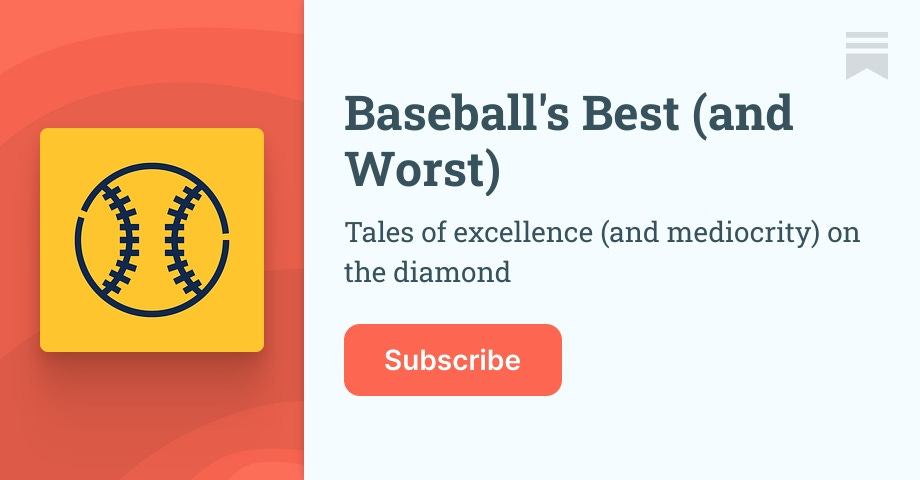[ad_1]

The most important leagues first confirmed an curiosity in Oakland in 1947.
It was obscure why. Oakland was solely the Twenty seventh-largest metropolis within the nation on the time. It was smaller than 16 different cities that lacked big-league groups, together with Los Angeles, Baltimore, Milwaukee, Houston, and San Francisco.
The final place on that checklist would show to be the important thing.
The Nationwide League commissioned a panel within the fall of 1947 to analyze potential enlargement choices alongside the West Coast. The committee accomplished its work in December. Its submission, the so-called Frick-McKinney Report, was not made public.
The secrecy was undoubtedly for the very best, given the absurdity of a few of the panel’s pronouncements. It warned, for instance, that San Diego was “totally unready” for major-league ball, partly due to its demographics. “In the intervening time,” mentioned the report, “the inhabitants has a excessive share of Negroes and Mexicans.”
However the Frick-McKinney evaluation was bullish on Los Angeles and San Francisco, figuring out that the latter metropolis “affords wealthy alternative.” And it was surprisingly upbeat about Oakland, situated 10 miles east of San Francisco.
“From a serious league standpoint, an Oakland-San Francisco set-up would induce a lot the identical rivalry that now exists between New York and Brooklyn,” mentioned the committee, which had no approach of understanding that the Nationwide League’s two New York groups would concurrently relocate 10 years later — to the 2 largest cities on the West Coast.
“Like Los Angeles, the San Francisco and bay territory might, we consider, help two major-league golf equipment,” the Frick-McKinney Report concluded in 1947, thereby establishing Oakland as an enlargement goal.
20 years would go earlier than baseball lastly hit the bull’s-eye. Los Angeles and San Francisco joined the majors in 1958, although Oakland was pressured to attend till 1968, when Charlie Finley moved his Kansas Metropolis Athletics to the brand new Oakland-Alameda County Coliseum.
And there the A’s have remained — similar metropolis, similar stadium — to this present day. Their run in Oakland has reached 56 seasons.
However it may quickly be coming to an finish. The Athletics announced last month that they intend to buy land for a brand new ballpark in Las Vegas.
A brand new installment will arrive in your e-mail every weekday morning
Critics instantly accused the workforce of ineptitude and insensitivity. Peter Hartlaub, a tradition critic for the San Francisco Chronicle, tweeted, “The A’s possession doesn’t deserve these nice followers.” Ken Rosenthal, a senior author for the Athletic, mentioned, “Yeah, they draw 5,000. And why? As a result of the proprietor, John Fisher, has wrecked the membership.” Even Rob Manfred, the baseball commissioner who gave a inexperienced mild for the transfer, admitted that he feels “sorry for the followers in Oakland.”
There may be trigger to doubt the viability of Las Vegas as a baseball market — a topic for an additional day — however there is no such thing as a purpose to leap on the bandwagon of pity for Oakland.
Why not? Listed here are 4 factors to think about:
1. Oakland stole the workforce within the first place.
The A’s slowly made their way from the Japanese Time Zone to the Pacific. They had been based because the Philadelphia Athletics in 1901, shifted to Kansas Metropolis in 1955, and slipped off to California in 1968.
Most of the similar followers who celebrated when Oakland enticed the Athletics from Okay.C. are actually heartbroken that the A’s are planning to go away for Las Vegas. Dwell by the sword, die by the sword.
2. The San Francisco Bay Space isn’t sufficiently big for 2 groups.
4 baseball markets are dwelling to a pair of big-league franchises: New York, Los Angeles, Chicago, and San Francisco-Oakland.
The primary three are the biggest metropolitan areas in the US, respectively containing 19.8 million, 13.0 million, and 9.5 million residents. The inhabitants of the San Francisco-Oakland space is comparatively small by comparability, 4.6 million.
Eight single-club markets are literally bigger than the San Francisco-Oakland conglomeration: Atlanta, Boston, Dallas, Houston, Miami, Philadelphia, Phoenix, and Washington.
The Giants arrived within the San Francisco space first. They’re the logical candidate to stay in a market that needs to be restricted to a single franchise.
3. Oakland has by no means drawn properly.
A lot has been mentioned in latest days in regards to the Athletics’ loyal followers, and little question some do exist. However there aren’t very many.
I developed the fan support index (FSI) for conditions similar to this. It tracks the connection between a workforce’s attendance and its victory whole.
FSI is calculated in three steps: (1) A workforce’s dwelling attendance for a given season is split by its variety of victories, each dwelling and street. (2) The next determine is split by the common attendance per victory for all big-league groups. (3) The result’s multiplied by 100.
A rating of 100 signifies help that’s commensurate with a workforce’s high quality on the sector. A better quantity suggests box-office energy that exceeds expectations, whereas a two-digit FSI is an indication of lethargy.
Oakland attained an FSI above 100 in solely 5 seasons since 1968, and under no circumstances since 1991. Its index fell beneath 75 — greater than 25 % under regular — in 35 totally different years. That’s actually a exceptional (and depressing) file of fan apathy.
Charlie Finley fielded a number of excellent golf equipment within the Seventies, together with three world champions. None of these top-flight Oakland golf equipment drew greater than 1.1 million followers in any given season, then and now an incredibly low determine. (It needs to be acknowledged that Finley ran a maddeningly low-cost operation, which alienated a large portion of the Athletics’ fan base.)
The box-office outcomes had been so disappointing that Finley got here to remorse ever leaving Kansas Metropolis. “I made an enormous mistake,” he mentioned in 1978. “With the brand new stadium they constructed (in Kansas Metropolis), with their baseball climate, I’d have drawn 2 million. In most baseball cities on summer time nights, individuals come to the sport in a light-weight sweater. In Oakland, they want overcoats.”
4. The A’s have typically been aggressive.
Sure, Oakland’s present workforce is dreadfully unhealthy. Sure, present proprietor John Fisher appears to have minimize his bills far under any logical restrict. And sure, the workforce’s stadium is comparatively historical and clearly poor.
However these complaints don’t clarify Oakland’s traditionally unhealthy attendance.
The A’s gained their third straight World Collection in 1974, establishing Oakland as the one franchise moreover the New York Yankees to drag off such a trifecta. But the Athletics ranked twenty second among the many 24 big-league golf equipment in attendance that 12 months, although their stadium was lower than a decade outdated.
That’s outdated information, you scoff. What in regards to the present scenario?
Okay, let’s have a look at the previous 20 seasons (2003 by 2022). The Athletics ranked a robust eighth amongst all 30 big-league groups within the variety of regular-season victories collected throughout that span.
They usually put collectively a postseason file that was even higher. The A’s certified for the playoffs eight occasions in 20 seasons, a complete surpassed by solely six golf equipment. Their attendance, regardless of such on-field high quality, was persistently subpar.
That brings us to the underside line.
It’s at all times unlucky when a franchise relocates. Loyal followers are at all times left behind. However the 4 factors famous above can result in just one conclusion: Oakland had loads of time, but it surely hasn’t established a sufficiently robust hyperlink with its baseball workforce. The town would not should maintain its franchise.
[ad_2]
Source link






